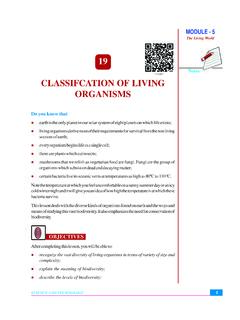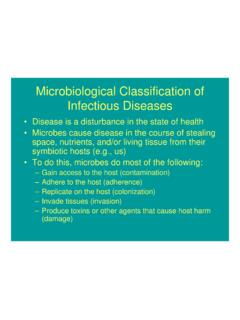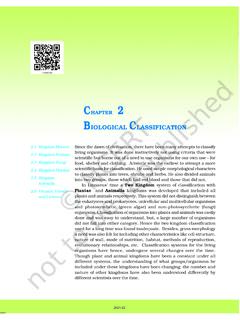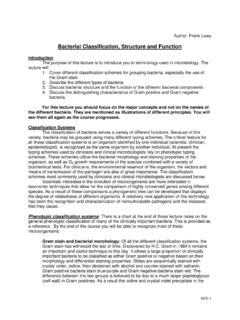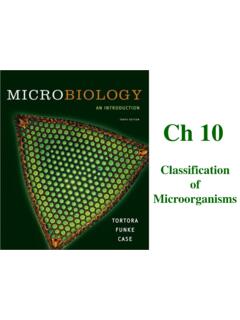Classification of organisms
Found 11 free book(s)Characteristics and Classification of Living Organisms
cdn.savemyexams.co.ukClassification of Living Organisms . Question Paper 1 . Subject Biology . Topic Characteristics and Classification of Living Organisms . Booklet Question Paper 1 . Time Allowed: 75 minutes Score: /62 Percentage: /100 . Exam Board CIE Level …
Characteristics and Classification of Living Organisms
cdn.savemyexams.co.ukClassification of Living Organisms . Question Paper 2 . Subject Biology . Topic Characteristics and Classification of Living Organisms . Booklet Question Paper 2 . Time Allowed: 69 minutes Score: /57 Percentage: /100 . Exam Board CIE Level …
Name Score Classification
www.warrencountyschools.orge. Recognize that classification is a tool made by science to describe perceived patterns in nature. Objective 3: Classify organisms using an orderly pattern based upon structure. a. Identify types of organisms that are not classified as either plant or animal. b. Arrange organisms according to kingdom (i.e., plant, animal, Monera, fungi, protist).
Unit 1 Characteristics and classification of living organisms
assets.cambridge.orgCLASSIFICATION helps us to impose order and a general plan on the diversity of living things.Scientists have always tried to organize and classify the objects,including living organisms,around them. Classification can be defined as grouping organisms according to their structural similarities.This means that organisms that share
19 CLASSIFCATION OF LIVING ORGANISMS
www.nios.ac.inMODULE - 5 Classification of Living organisms The Living World 6 Notes organisms are common to all regions while some are restricted to certain regions only e.g. elephants are found only in Asia and Africa and nowhere else in the world. Grass is found all over the world. Fig. 19.3 The six biogeographic regions Indian Scene
Microbiological Classification of Infectious Diseases
www.ph.ucla.eduMicrobiological Classification of Infectious Diseases • Types of Parasites: – Protozoa: Single-celled, microscopic organisms that can perform all necessary functions of metabolism and reproduction. Some protozoa are free-living, while others parasitize other organisms for their nutrients and life cycle.
HAPTER 2 BIOLOGICAL CLASSIFICATION
ncert.nic.inliving organisms. It was done instinctively not using criteria that were scientific but borne out of a need to use organisms for our own use – for food, shelter and clothing. Aristotle was the earliest to attempt a more scientific basis for classification. He used simple morphological characters to classify plants into trees, shrubs and herbs.
C 2 IOLOGICAL CLASSIFICATION - NCERT
ncert.nic.inliving organisms. It was done instinctively not using criteria that were scientific but borne out of a need to use organisms for our own use – for food, shelter and clothing. Aristotle was the earliest to attempt a more scientific basis for classification. He used simple morphological characters to classify plants into trees, shrubs and herbs.
Bacterial Classification, Structure and Function
www.columbia.eduthe degree of relatedness of different organisms. A relatively new application of this technology has been the recognition and characterization of noncultivatable pathogens and the diseases that they cause. Phenotypic classification systems: There is a chart at the end of these lecture notes on the
Classification of Microorganisms
lpc1.clpccd.cc.ca.usClassification: Species Definition Eukaryotic species: A group of closely related organisms that breed among themselves Prokaryotic species: A population of cells with similar characteristics (Bergey’s Manual of Systematic Bacteriology is standard reference on bacterial classification). Culture: Grown in laboratory media
Classification of Living Organisms
www.socialcircleschools.comClassification of Living Organisms I. General A. Scientists have described and named a total of 1.5 million species. It is estimated that the total number of species is about 10 million. Life on earth is constantly evolving and changing slowly over time. Scientists attempt to order the natural world by grouping and classifying all living organisms.




